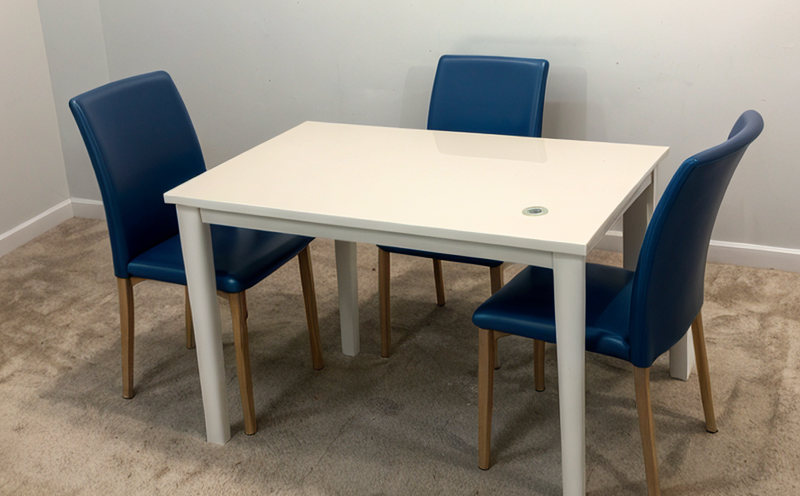BS EN 310 Bending Strength Testing of Plastic Laminated Furniture
The British Standard EN 310 specifies testing methods to determine the bending strength of plastic laminates, which are widely used in the manufacturing of furniture and interior components. This test is crucial for ensuring that plastic laminated products meet safety and performance standards. The standard applies specifically to plastic laminates with a thickness exceeding 2 mm, making it highly relevant for furniture manufacturers and designers.
The testing procedure involves placing a laminate sample under a defined load until failure occurs. The bending strength is calculated based on the maximum load applied before the specimen fractures or exhibits unacceptable deformation. This test ensures that products are robust enough to withstand typical usage conditions without compromising safety.
For furniture manufacturers, compliance with EN 310 helps in maintaining brand reputation and meeting regulatory requirements. It also aids in optimizing product design by identifying potential weaknesses early in the development process. In the context of quality assurance, this test ensures that only high-quality materials are used, thereby enhancing customer satisfaction.
Understanding the parameters involved is essential for accurate testing. The specimen dimensions must conform to the standard’s specifications; typically, they range from 100 mm × 25 mm × thickness (where thickness > 2 mm). Specimen preparation includes cleaning and drying to ensure consistent test results. Instrumentation used in this test includes universal testers capable of applying precise loads at controlled rates.
Reporting the results involves documenting the bending strength value along with any observations regarding specimen behavior during testing. Compliance reports are prepared for regulatory submissions, ensuring that products meet all applicable standards. This not only aids in marketing but also builds trust among consumers and stakeholders who value product integrity.
Applied Standards
The British Standard EN 310 is the primary standard used for bending strength testing of plastic laminated furniture. It specifies detailed procedures to ensure accurate and consistent results across different laboratories. Compliance with this standard is essential for manufacturers looking to produce high-quality, safety-compliant products.
Other relevant standards that can complement EN 310 include ISO standards such as ISO 527-4 for tensile testing of thermoplastics and ISO 6872 for the determination of flexural properties of plastics. These additional standards provide supplementary data points that, when combined with EN 310 results, offer a more comprehensive understanding of material performance.
Why Choose This Test
- To ensure product safety and durability in furniture applications
- To comply with international standards and regulations
- To enhance customer confidence through proven quality assurance
- To optimize design for better performance and longer lifespan
- To identify potential weaknesses early in the development cycle
- To maintain brand reputation by meeting high-quality expectations
- To facilitate easier compliance during regulatory inspections
- To support sustainable manufacturing practices by using tested materials
Use Cases and Application Examples
| Use Case | Description |
|---|---|
| Furniture Manufacturing | Determining the bending strength of plastic laminates used in chairs, tables, and other furniture items. |
| Interior Design | Evaluating the durability of plastic components used in decorative elements like wall panels or flooring. |
| R&D & Innovation | Identifying optimal material combinations for innovative products that require exceptional strength-to-weight ratios. |
| Quality Control | Ensuring consistent quality across different batches of plastic laminates by comparing test results against established benchmarks. |
| Regulatory Compliance | Maintaining compliance with international standards and local regulations to avoid potential legal issues.|
| Product Safety | Evaluating the structural integrity of products under simulated real-world conditions to prevent accidents and injuries. |
| Sustainability Initiatives | Testing recycled plastic materials for furniture applications to ensure they meet performance criteria without compromising on environmental impact. |





